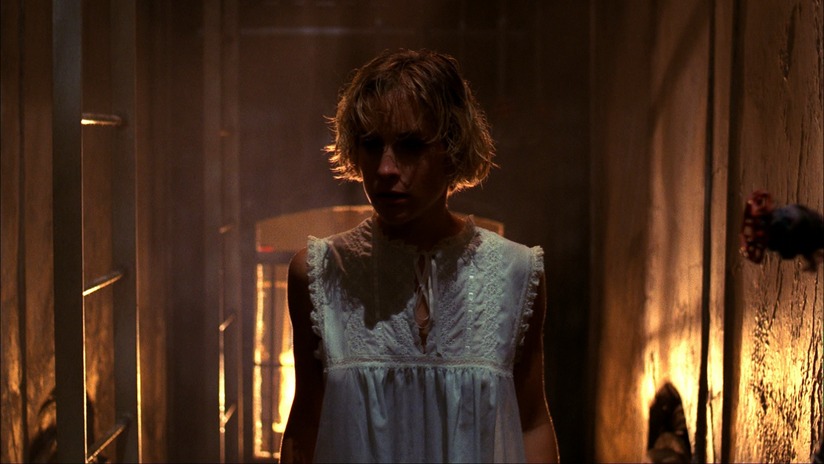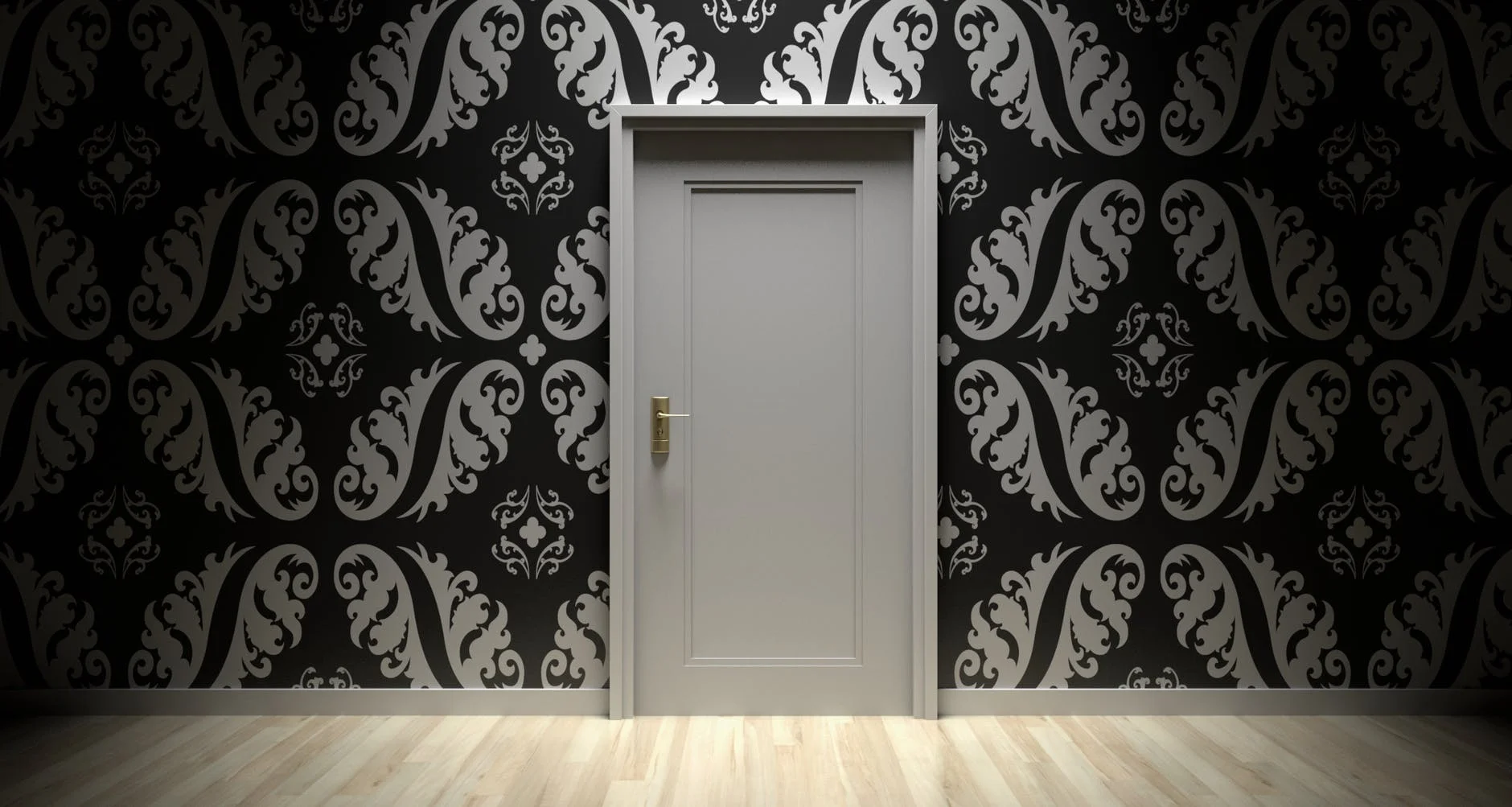[Pride 2019] Do You Sleep?
I have always been an insomniac. One of my earliest memories in kindergarten was that people at school would always ask me why I always looked so tired. Concerned teachers would attempt to pry and my fellow students would parrot the refrain. People would ask me if I ever slept, and I would tell them I did. Apparently, I just didn’t sleep regularly or a lot, but I still slept.
As a kid, I had nightmares. I still do, though they aren’t as bad. I was born in the mid-’80s, during the height of both slasher film mania and the Reagan era (are these things connected? I’ll leave it to you to decide…but the answer is yes). When I couldn’t sleep, I would go into the living room in the middle of the night, turn on the television, keep the volume down so I wouldn’t get caught by my sleeping parents, and I’d watch whatever was on. During that time period, late night HBO usually meant - horror films! Or, softcore porn, and damned if those two things don’t tell you a lot about who I am as a person.
I watched many horror films during this time before I was caught, but this was the ‘80s when parents barely cared what their kids did in real time much less what they were watching on TV, especially at 2am, so they didn’t do much to stop me. Nobody wants to get out of bed in the middle of the night to turn off a TV, so I kept watching. Even now, it’s very standard behavior for me to fall asleep during a horror film or podcast, or, alternately, to wake up in the middle of the night to put one on. There’s just something about the whole ritual that has become soothing for me.
For a long time, I have insisted that horror films are a way for us to understand our traumas and to achieve some kind of catharsis through them. We all encounter horror in our lives - some of us more than others, but we all do. To peel back the soft layer of our hopes and dreams is to reveal our nightmares and our fears, and horror films do that better than any other genre.
The first horror films I truly remember: Nightmare on Elm Street, The Kiss, Vamp, Hellraiser and Hellraiser II, The Hunger, and Waxwork. These selections I feel are specifically important, as they would be the only films with Queer elements whatsoever that I remember seeing in my youth. Besides horror films, there simply weren’t any gay people in media that I was aware of…at least not for many years to come. Even the films listed here that weren’t queer at all featured a bizarre sexuality that was missing from the comics, books, cartoons, and other films I watched. During the day, I would ingest wholesome media just like any other kid. But at night, it was all vampires and serial killers, and nightmares come to life.
For years, I had forgotten that I had seen Hellraiser II, and I was haunted by dreams of a woman without skin, wandering alone through the gray corridors of Hell. When I watched the movie at age 18, I was shocked to realize that major elements of the movie had already been appearing in my dreams for years. Specifically, the scene in which Kirsty Cotton dons Julia’s skin, which comes sliding off of her and leaving her a bloody mess, had been reappearing in my dreams my entire life up to that point.
Why was it this specific scene that stayed with me? The element of tenderness? The woman-centric narrative? Emerging from a dead skin, bloody and renewed? Why was I so obsessed with Julia, raw and leaving smeared red handprints all over the plain white walls of an immaculate home, covering herself in bandages to barricade herself from the agony of existing without a skin? The symbology is obvious to us today but as a 4 or 5 year old (when I must have first seen this film), what an incredible impact for my developing mind. What strange, specific imagery to have clung to above others.
I believe that horror is inherently queer even when it doesn’t specifically focus on queer characters. Even when it focuses on straight characters, risky sexuality and a pervasive outsider mentality permeates the genre. Obviously I don’t connect serial killers with Queerness. But I do connect horror films with my own developing understanding of how the world worked, and what my own status within it would be. I don’t know what else I could have watched or read in the time that would have helped me flesh out my feelings on my own dark side; or what would have given me a basis for understanding sex outside of heteronormative standards of the time. Whether or not kids should watch horror films, I don’t know. For me, though, I never felt like having done so caused any harm. Truly, looking back, it did me a lot of good, and it remains one of the primary ways in which I reflect on the intrinsic horror of the world.
Sara Century is an artist of many disciplines whose been working in multiple forms since her late teens. She currently works most prominently through SYFY FANGRRLS writing feminist pop culture critiques based in her own activism and longstanding love for media of all kinds.
You can find her on Twitter and Instagram and at www.saracentury.org.


![[Pride 2019] Do You Sleep?](https://images.squarespace-cdn.com/content/v1/5b39608d75f9eef54c62c3f0/1558986875527-Q37PJSRVFPBZHMOFJBRW/i-like-when-measdfasdfasdfn-are-direct.jpeg)


![[Pride 2021] An Ode to the Bodies that Lifted Me Up: 'Queer' Muscularity in Pop Culture](https://images.squarespace-cdn.com/content/v1/5b39608d75f9eef54c62c3f0/1622928217981-TPF2YFDN8FHIZ34L9Y57/clean.jpg)
![[Pride 2019] Tethered to the Closet](https://images.squarespace-cdn.com/content/v1/5b39608d75f9eef54c62c3f0/1560985069673-1LGBOSFI1WH4KFFN4NFV/mv5bztlinwjhm2ytndc1mc00ytk1lwe2mgytzme4m2y5oddlnzqzxkeyxkfqcgdeqxvymzy0mte3nzu40._v1_.jpg)
![[Pride 2019] Blood, Boys and Blowjobs: Revisiting 2004's Gay Slasher, Hellbent](https://images.squarespace-cdn.com/content/v1/5b39608d75f9eef54c62c3f0/1561677413349-Z8GQF3LFPP2MCPCWDIUP/tyertyretyer.jpg)
![[Pride 2019 Short Story] The Lighthouse](https://images.squarespace-cdn.com/content/v1/5b39608d75f9eef54c62c3f0/1560976351288-0HHZ6O2JR0HUSSCFQX1Q/pexels-photo-722664.jpeg)
![[Pride 2019] Horror, Fear & Identity](https://images.squarespace-cdn.com/content/v1/5b39608d75f9eef54c62c3f0/1560974283767-URCVH49ICXSUYBFM41EC/1253258.jpg)
![[Pride 2019] THE BOYS NEXT DOOR: The Homoeroticism of Fright Night and how it saved my life](https://images.squarespace-cdn.com/content/v1/5b39608d75f9eef54c62c3f0/1560968195855-AJ11PZT1NPP0A15IW2MF/fright-night-gay.png)
![[Pride 2019] The Lesbian Villain](https://images.squarespace-cdn.com/content/v1/5b39608d75f9eef54c62c3f0/1560979479014-K1CGGIB1HGL6M5XQQ8JH/asdffsdfgsdghdfghhjj.jpg)
![[Pride 2019] The Final Girl: A LGBTQ+ Representation](https://images.squarespace-cdn.com/content/v1/5b39608d75f9eef54c62c3f0/1560978597649-KMGZYFA5I02ZOMT9Q3VF/8ea179785b1649cdeefb0eb077c1bd32.jpg)
![[Pride 2019] Normalizing Queerness through Vampirism](https://images.squarespace-cdn.com/content/v1/5b39608d75f9eef54c62c3f0/1560977810654-H9UDEGT2J1L0RUV6KIJX/werwertwertwertw.jpg)
![[Pride 2019] Injecting Queer Femme Rage into "Audition"](https://images.squarespace-cdn.com/content/v1/5b39608d75f9eef54c62c3f0/1560979929151-RVBW26DNCHR5TBXC21BK/audition-1108x0-c-default.jpg)
![[Pride 2019 Short Story] Deer Wife](https://images.squarespace-cdn.com/content/v1/5b39608d75f9eef54c62c3f0/1560975199628-JF11Z4SHT75XB1A4L7DU/pexels-photo-2302802.jpeg)
![[Pride 2019] I Don't Watch Horror Movies](https://images.squarespace-cdn.com/content/v1/5b39608d75f9eef54c62c3f0/1560630982974-O3ZCRGEFNR2JOEF6N011/tKEHoKPZv3af0Pn3poaOLHOJ6NM-0.jpg)
![[Pride 2019 Short Story] Such Nice Guys](https://images.squarespace-cdn.com/content/v1/5b39608d75f9eef54c62c3f0/1560973260982-RMED56MMBWXYO52VD9Y5/pexels-photo-408517.jpeg)
![[Pride 2019] “Reclamations of Ourselves”: Ritual, Horror, and the Erotic in the work of Audre’s Revenge and Monika Estrella Negra](https://images.squarespace-cdn.com/content/v1/5b39608d75f9eef54c62c3f0/1560972375295-YKD2V1JBSYZLSXRT17IJ/dsfghsdghdsg.jpg)
![[Pride 2019] Is Jennifer’s Body the Bisexual Horror Film We Never Knew We Needed?](https://images.squarespace-cdn.com/content/v1/5b39608d75f9eef54c62c3f0/1560967347423-2I74925P8ETSI0BT7I81/jennifers-body-poster.jpg)
![[Pride 2019] Why Horror?](https://images.squarespace-cdn.com/content/v1/5b39608d75f9eef54c62c3f0/1560632665620-2J7FFX40WJU2LDRTZAJR/LATENTIMAGE6.png)
![[Pride 2019] Villainizing Queerness in Alexandre Aja’s High Tension](https://images.squarespace-cdn.com/content/v1/5b39608d75f9eef54c62c3f0/1560631689481-PWYN80K2HYST4CYIO5V6/MARIE_%2528HAUTE_TENSION%2529.jpg)
![[Pride 2019] Horror Did Not Save My Life](https://images.squarespace-cdn.com/content/v1/5b39608d75f9eef54c62c3f0/1560631362747-54XOE0TBGJXGOB8UOX8P/KE64oaAn.jpg+large.jpg)
![[Pride 2019] 18 & Gay](https://images.squarespace-cdn.com/content/v1/5b39608d75f9eef54c62c3f0/1560634045789-OSQ1W5ZSKQSGKPVAJXYW/XR11F0fT.jpg+large.jpg)
![[Pride 2019] How Horror is My Coping Mechanism](https://images.squarespace-cdn.com/content/v1/5b39608d75f9eef54c62c3f0/1560629268953-K08L1OLGI2ICS3WAI62V/F1pmQFht.jpg+large.jpg)

![[Pride 2019] Embracing My Nature: Hannibal and My Gay Awakening](https://images.squarespace-cdn.com/content/v1/5b39608d75f9eef54c62c3f0/1560382782983-NN9RA658WTZFPQEK4DMR/f175ffff4188695dfbde6276a3c13244.jpg)
![[Pride 2019] How Sailor Moon Taught Me It's OK to be Queer](https://images.squarespace-cdn.com/content/v1/5b39608d75f9eef54c62c3f0/1560298136905-6NXB1NB337UZRR84MVCL/1.PNG)
![[Pride 2019] Don Mancini's Queer Inclusion](https://images.squarespace-cdn.com/content/v1/5b39608d75f9eef54c62c3f0/1558992991942-1EFIALF6MR98YNGQJ61J/Glenorglenda-e1497479115890.jpg)
![[Pride 2019] “Where’s the dick in my horror?!”: Thoughts on Queer Spectatorship and Desire in Horror](https://images.squarespace-cdn.com/content/v1/5b39608d75f9eef54c62c3f0/1558935308247-WRJM5QWQOIPH3IBE5ENJ/Hellbent-Pic-1.jpg)
![[Pride 2019] Two Angels: The Mutant Body in X-Men: The Last Stand and X-Men: Days of Future Past](https://images.squarespace-cdn.com/content/v1/5b39608d75f9eef54c62c3f0/1560028480927-8VUZWP0O88SMK2TQTC3H/thumbnailImage.jpg)
![[Pride 2019 Short Story] A Bright and Bloody Becoming](https://images.squarespace-cdn.com/content/v1/5b39608d75f9eef54c62c3f0/1559090164312-FSVRI54ZX9ZUE7R9JC7Z/image1.jpeg)
![[Pride 2019] Fright Night and The Sexual Awakening of a Queer Woman](https://images.squarespace-cdn.com/content/v1/5b39608d75f9eef54c62c3f0/1559089258501-QQA99TSCU2BZVZFZUXLM/Jerry_Original.jpg)
![[Pride 2019] I'm Gay for Horror](https://images.squarespace-cdn.com/content/v1/5b39608d75f9eef54c62c3f0/1558991573629-UHWUVOMEKTH56IJ11XAS/the-changeling-1980-film-05ae6968-0ee6-4bb0-aa87-5e652d659be-resize-750.jpg)
![[Cinepocalypse 2019 Review] Belzebuth](https://images.squarespace-cdn.com/content/v1/5b39608d75f9eef54c62c3f0/1559950915747-2KGAHEUXVPGMLNNSQ2RA/MV5BOWZlNTAyNGEtYjMxNS00NTdmLThkZTktYmQ4NzBhMDE5NWQ2XkEyXkFqcGdeQXVyMDc0MzU2OQ%40%40._V1_SY1000_CR0%2C0%2C693%2C1000_AL_.jpg)